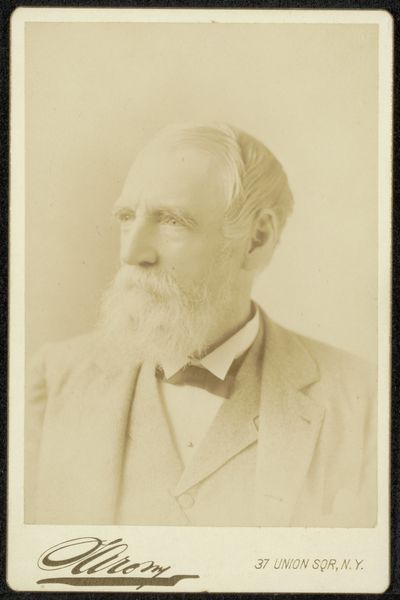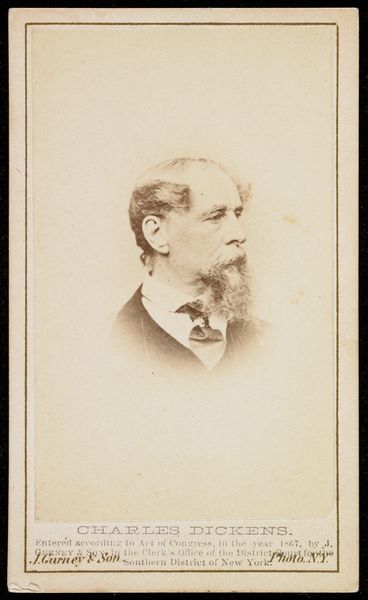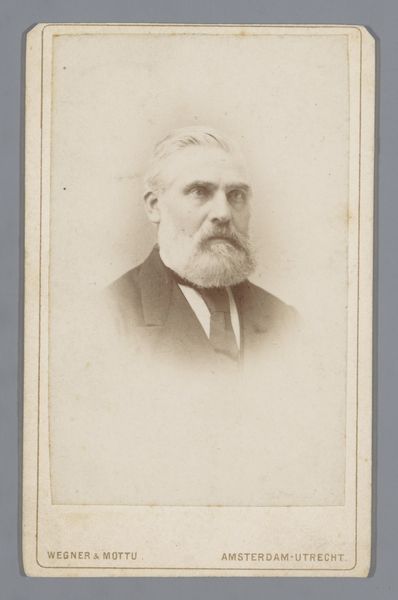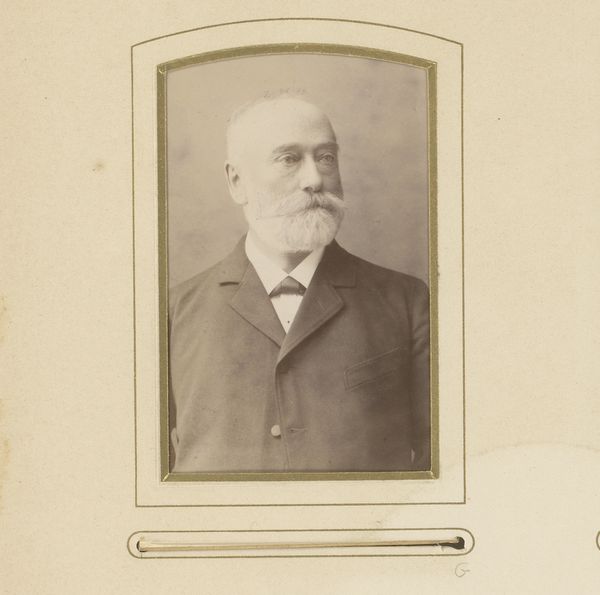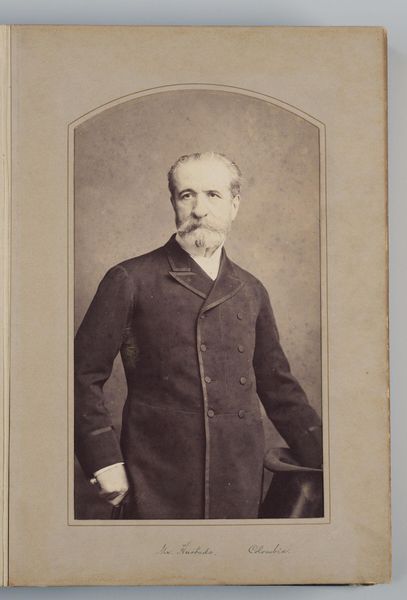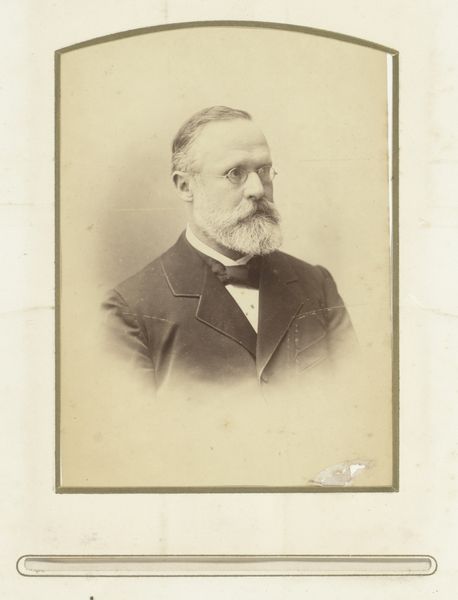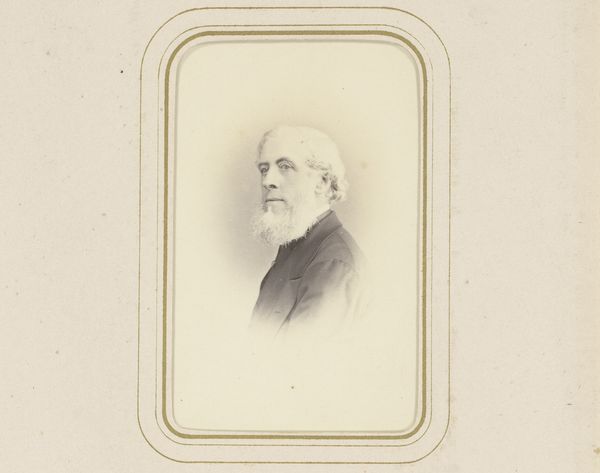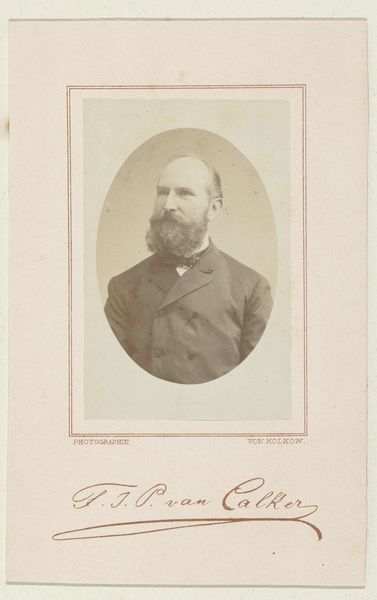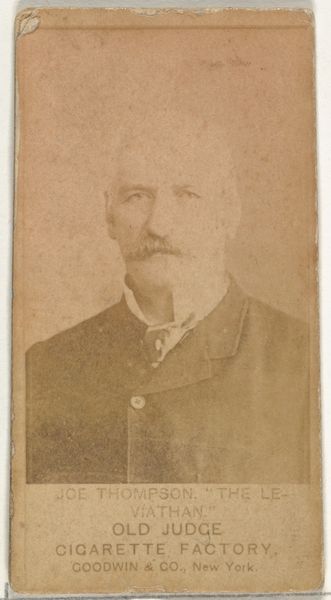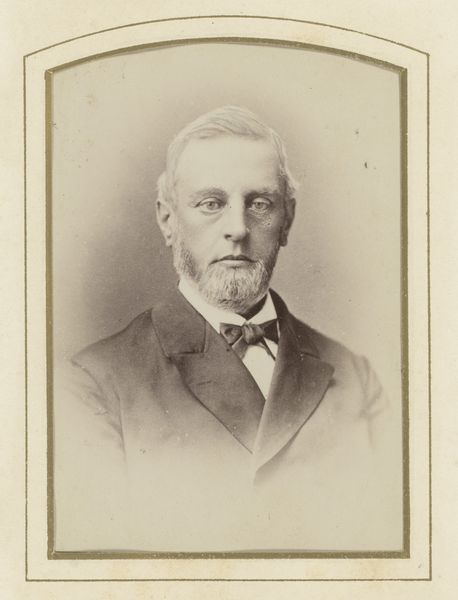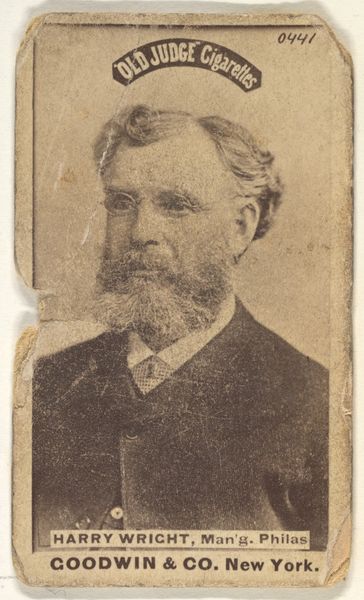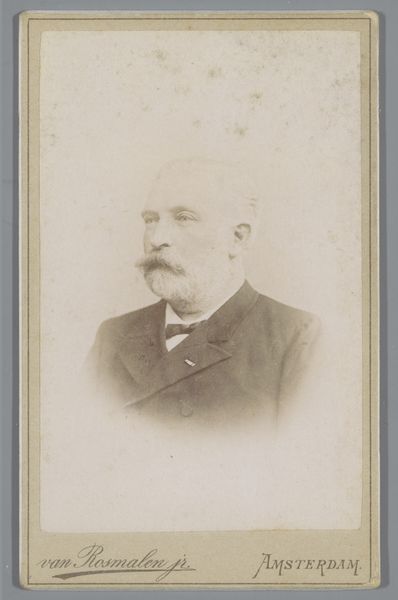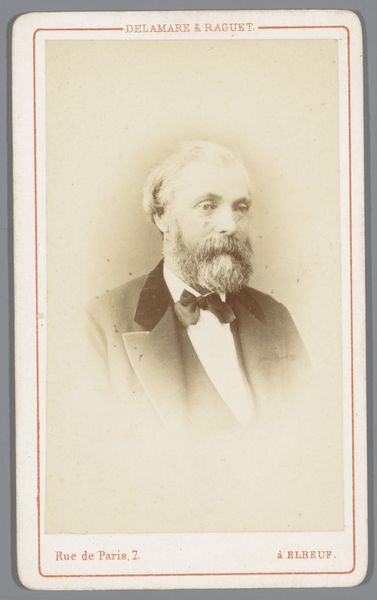
William Henry "Harry" Wright, Manager, Philadelphia, from the Old Judge series (N172) for Old Judge Cigarettes 1888
0:00
0:00
drawing, print, photography
#
portrait
#
drawing
# print
#
baseball
#
photography
#
men
Dimensions: sheet: 2 11/16 x 1 3/8 in. (6.9 x 3.5 cm)
Copyright: Public Domain
Curator: This photographic print from 1888 by Goodwin & Company depicts William Henry "Harry" Wright, a baseball manager in Philadelphia. It's presented as an Old Judge Cigarette card. What are your first thoughts on viewing this piece? Editor: I'm struck by its sepia tone, which gives it a strong antique feel. The subject's formal attire contrasts interestingly with its origins as a baseball card advertisement. It's a curious composition and, from a design point of view, rather captivating. What stands out to you about this photograph? Curator: I am intrigued by the interplay of textures. Note the smoothness of the card contrasted against the relatively high resolution visible in Wright's beard and suit, and the textual elements advertising Old Judge cigarettes at the base. It calls into question the interplay between high art and consumer culture. Also observe that while ostensibly a portrait, the composition draws one's attention downwards; towards the literal and figurative ground of the artwork. Why do you suppose that is? Editor: Maybe to explicitly connect Wright’s prestige to the advertisement and brand being sold? To ground him, making him a product and part of the commodity. Curator: An interesting observation. And perhaps to signal the nascent intersection between sport, celebrity, and consumerism itself. The placement seems deliberate, doesn't it? Highlighting how the structure itself underscores the commercial nature of the image. Editor: I see what you mean! Before, I was just observing textures, but now I can see the layers of intention in the visual composition. Thank you! Curator: Indeed. It is pieces like these that constantly reshape my appreciation for how the semiotic meaning is shaped through compositional elements.
Comments
No comments
Be the first to comment and join the conversation on the ultimate creative platform.
